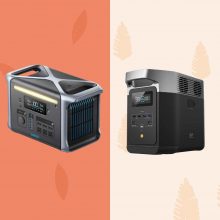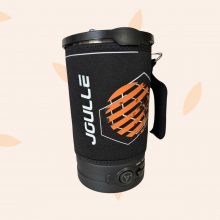
Looking for tips on how to choose the perfect summer tent for your camping vacation? There are numerous options and factors to consider when it comes to choosing the perfect summer tent. This blog post will provide key tips on how to choose the best tent for the summer season based on group size, terrain environment and more.
Tips for Choosing the Perfect Tent Capacity
When selecting a tent, the first step is to decide on the capacity of the tent in relation to number of people and gear that will be using it. Simply put, the capacity rating provides an idea of how much stuff can comfortably fit inside.
- Smaller tents (1-person and 2-person tents) are easier to transport than larger ones and often weigh less than 6 pounds. On the flip side, they offer minimal storage, limited internal space and overall restricted movement.
- Medium size tents (3-person and 4-person tents) also know as “car camping” tents, usually offer greater comfort, more space for storage and more living space. However, they’re heavier and not built to be moved around for long-distance backpacking or hiking, hence the “car camping” nickname.
- Large tents (6-person+) offer a ton more space, including multiple rooms with privacy dividers, ample living & storage areas. Of course, all this comfort brings drawbacks which include increased logistical challenges due to weight and size and a more complicated setup.
The general rule of thumb is to choose a tent with more capacity than the number of people that will be using it – for example, if 3 people are coming on your trip, get a 4-person or even 6-person tent to make sure everybody is comfortable. This will be especially important if it starts to rain and you get stuck inside for a few days.
Benefits and drawbacks of different camping tent capacities
Different tent sizes each have their unique advantages and disadvantages – here’s a quick rundown of pros and cons to consider for bigger versus smaller tent capacity.
| Tent Size | Benefits | Drawbacks |
|---|---|---|
| Small (1-2 Person Tent) | Lightweight and highly portable, making it ideal for backpacking and solo camping. Simple and quick to set up. Perfect for warmer climates where less gear is required. | Can feel cramped, especially if you have a lot of gear or require more personal space. May not offer enough room for activities during bad weather. |
| Medium (3-4 Person Tent) | Offers a good balance between space and portability. Suitable for small families or groups of friends. Provides sufficient space for personal belongings and a comfortable sleeping area. | May feel snug with four adults especially if additional gear storage is required. Heavier and bulkier than small tents, which can be a concern for backpackers. |
| Large (5 or More Person Tent) | Ample space for sleeping, gear storage, and camping activities. Preferred for cooler weather camping to provide more space for activities and gear. Ideal for car camping or camping trips where weight and bulk are less of a concern. | Can be challenging and time-consuming to set up. Heavy and bulky, making it a poor choice for backpacking or any situation where you need to carry the tent for long distances. |
Selecting the Right Type of Tent for Your Camping Style

Depending on your camping style and environment, there are several types of tents to choose from, such as dome tents, cabin tents, and backpacking tents.
Dome tent
Dome tents have a circular design that stands tall at the center and flares outwards at the sides, and are popular for family and group camping. These tents are usually spacious with lots of headroom. They make good summer tents because the dome shape facilitates good ventilation and airflow, keeping the tent comfortable during hot temps and and stormy nights.
- Pros: Dome tents are easy to set up, provide good wind resistance, and are generally lightweight.
- Cons: They tend to offer less living and head space compared to cabin tents. Larger dome tents can be less stable in very high winds due to their higher profile.
Cabin tent
Cabin tents are great for summertime car camping with larger groups, offering plenty of internal space with high ceilings and multiple windows. They have ample ventilation, which makes them an ideal choice for summer camping in hot, humid or moderate climates.
Additionally, cabin tent can often be divided into separate rooms with privacy screens, so that you can easily manage sleeping arrangements with different group sizes or create extra storage space while keeping the main living area free from clutter.
- Pros: Cabin tents are comfortable, spacious, have great ventilation and often include features such as awnings or multiple rooms.
- Cons: Cabin tents are usually heavier and more complex to set up, making them less suitable for backpacking. They also may not perform well in high winds due to their vertical wall design.
Backpacking tent
Backpacking tents are designed to be as lightweight as possible, easy to pack, all while providing the maximum amount of weather protection. They tend to be small in comparison to dome and cabin tents, and may not be as well ventilation because of the reduced living space. Backpacking tents are often more expensive because they are constructed with high-performance fabrics and materials.
- Pros: Backpacking tents are lightweight, easy to carry, weather resistant, and durable.
- Cons: They usually offer less space and may not be comfortable for extended periods. They can also be more expensive because of their specialized materials.
Considering Seasonality: Choosing the Right Summer Tent
You might think that since you’re planning a summer camping trip that weather is not a big consideration; as long as your tent is well-ventilated and stays cool, you’ll be fine, right? (Probably not) It’s important to select a tent appropriate for warmer climates and rainy weather.
- Summer often brings unexpected rain, which may also bring gusty winds. Depending on where you’re camping, you may even run into cold temperatures. For example, temps in Northern California typically stay in the 40 – 60 degree range during May – August.
- Thus, you want to choose a tent that’s built for the season and climate. A good quality tent should not only be lightweight, durable, and easy to set up, but also designed with features that meet your specific needs in different seasons and weather conditions.
- It’s important to pay attention to details like fabric material types, construction of the canopy and rainfly, ventilation systems, and taped floor seams to prevent water leaks or insects.
Differences between 3-season and 4-season tents
3-season tents
3-season tents are designed for milder spring, summer, and fall weather. They provide lighter, more ventilated camping with mesh panels to boost airflow, large doors and windows that allows for better air circulation and reduced condensation.
- Pros: 3-season tents are lightweight, well-ventilated, and generally more affordable.
- Cons: They are not designed to for heavy snowfall or extreme cold.
4-season tents
However, four-season tents, on the other hand, are designed to be used all year round, including in harsher weather conditions like heavy rain and snowfall, extreme winds, and cold temperatures. They typically have fewer mesh panels and stronger pole structures. But, these tents are usually heavy and more complicated to setup.
- Pros: 4-season tents are durable, sturdy, and designed to withstand extreme weather conditions.
- Cons: They can be heavier and less ventilated, making them hotter in summer.
Recommendations to help you choose a tent for different climates and seasons
When it comes to choosing a tent for the perfect summer camping experience, there are a few factors to consider that people often overlook.
- Temperate climates: Look for breathable material that will keep condensation down as well as mesh panels which help control ventilation while keeping bugs out.
- Cold winter climates: Look for tents designed with superior insulating properties from wind chill, with high density fabrics and dome styled structures built for snow and rain accumulation.
- Hot summer climates: Choose light synthetic materials such as nylon and polyester, with additional open venting panels located near the ceiling top space. This will provide greater airflow throughout the interior areas which helps reduce heat and condensation build up.
Next, research the weather you’ll be facing during your trip – climates vary quite significantly depending on where you’ll be camping in the world.
| United States | Summer Climate | Temperature Range |
|---|---|---|
| West Coast | Cool and damp in the north, hot and dry in the south | 50-80°F (10-27°C) |
| Northern Plains, Midwest, Great Lakes, New England | Hot and humid | 60-80°F (16-27°C) |
| Southern Plains, Lower Midwest, Middle Atlantic states | Hot and Humid, lots of rain and heavy storms, possible tornadoes | 70-90°F (21-32°C) |
| Gulf Coast | Hot, humid, subtropical, heavy rain, chance of hurricanes September – November | 80-90°F (27-32°C) |
| Southwest | Warm to hot, desert and semi-arid | 80-100°F (27-38°C) |
| Pacific Northwest | Mild to hot temperatures, wet with frequent light to moderate rains | 60-75°F (16-24°C) |
| South America | Summer Climate | Temperature Range |
|---|---|---|
| Northern South America (Ecuador, northern Brazil, and Colombia) | Tropical | 70-90°F (21-32°C) |
| Southern South America (Argentina, Chile, and Patagonia) | Temperate, arid, and cold | 40-70°F (4-21°C) |
| Andes Mountains | Vertical climatic zones ranging from humid to freezing | Varies by altitude |
| Atlantic Coast | On the chilly side, with warmest month averaging 77°F (25°C) | Varies by location |
| Canada | Summer Climate | Temperature Range |
|---|---|---|
| Southern Ontario and Quebec | Humid continental | 60-80°F (16-27°C) |
| British Columbia | Temperate, coastal | 50-70°F (10-21°C) |
| Prairies | Continental, dry | 60-80°F (16-27°C) |
| Atlantic Provinces | Maritime, humid | 50-70°F (10-21°C) |
| Northern Canada | Arctic, subarctic | 30-60°F (-1-16°C) |
| Europe | Summer Climate | Temperature Range |
|---|---|---|
| Northern Europe (Scandinavia, Baltic states) | Subarctic, maritime | 50-70°F (10-21°C) |
| Western Europe (UK, France, Germany) | Temperate, maritime | 60-75°F (16-24°C) |
| Southern Europe (Spain, Italy, Greece) | Mediterranean | 70-90°F (21-32°C) |
| Eastern Europe (Russia, Ukraine) | Continental | 60-80°F (16-27°C) |
| Asia | Summer Climate | Temperature Range |
|---|---|---|
| Northern Asia (Siberia) | Subarctic, continental | 50-70°F (10-21°C) |
| Eastern Asia (China, Japan, Korea) | Temperate, monsoon | 70-90°F (21-32°C) |
| Southeast Asia (Vietnam, Thailand, Philippines) | Tropical, monsoon | 80-100°F (27-38°C) |
| South Asia (India, Pakistan) | Subtropical, monsoon | 80-100°F (27-38°C) |
| Western Asia (Middle East) | Arid, Mediterranean | 80-100°F (27-38°C) |
| Africa | Summer Climate | Temperature Range |
|---|---|---|
| Northern Africa (Egypt, Libya, Tunisia) | Arid and desert | 80-100°F (27-38°C) |
| Western Africa (Senegal, Ghana, Nigeria) | Tropical, wet and dry | 70-90°F (21-32°C) |
| Central Africa (Democratic Republic of Congo, Cameroon) | Tropical, humid | 70-90°F (21-32°C) |
| Eastern Africa (Kenya, Tanzania, Ethiopia) | Tropical, monsoon | 70-90°F (21-32°C) |
| Southern Africa (South Africa, Zimbabwe, Botswana) | Temperate, arid, and cold | 50-80°F (10-27°C) |
Factors to Consider for Tent Materials and Durability
Check materials used in tent construction, research the expected lifespan and maintenance of your tent to ensureit will last for many camping trips to come.
Materials commonly used in tent construction
Whether you’re in the market for a luxurious family tent or an ultralight backpacking shelter, there are several common materials used to construct tents. Tents are commonly constructed using a combination of materials including nylon, polyester, and canvas (also known as cotton) often found in larger cabin or glamping-style structures.
Nylon
Nylon is a popular material for tent construction due to its light weight and durability. It’s often used for backpacking tents where weight is a critical factor.
- Pros: Nylon is lightweight, durable, and generally water-resistant.
- Cons: It can degrade under prolonged exposure to UV rays, and cheaper nylons can sag when wet.
Polyester
Polyester is another commonly used material, particularly for family or car camping tents. It’s similar to nylon but has better UV resistance.
- Pros: Polyester is durable, UV resistant, and retains its shape when wet.
- Cons: It can be heavier than nylon and less breathable.
Canvas (Cotton)
Canvas, or cotton, tents have been around for a long time. They are durable and provide good insulation, but they are much heavier than synthetic tents.
- Pros: Canvas tents are breathable, insulating, and durable.
- Cons: They are heavy and require more maintenance. They also need to be properly dried before storage to prevent mildew.
Tent Features and Accessories
Tents come with a variety of features and accessories designed to enhance your camping experience. Understanding these can help you choose a tent that best suits your needs.
Vestibules
Vestibules are like mudrooms for your tent, an extended area covered by the rainfly but not enclosed by the main body of the tent. They are great for storing gear, wet shoes, or even cooking in bad weather.
- Pros: Vestibules provide extra storage space, keep the tent interior clean, and offer a sheltered area for cooking in bad weather.
- Cons: They add weight to the tent and can make the tent footprint larger, requiring more space to pitch.
Gear Lofts
A gear loft is a mesh shelf that hangs from the top of the tent interior. It’s a handy feature for storing items that you want to keep off the tent floor or easily accessible.
- Pros: Gear lofts offer extra storage space and help organize small items like headlamps, phones, or glasses.
- Cons: They can reduce headroom in the tent and the items stored can be hard to reach for shorter people or children.
Mesh Panels
Mesh panels are incorporated into the walls, roof, and doors of many tents. They provide ventilation, reduce condensation, and allow for stargazing opportunities.
- Pros: Mesh panels offer great ventilation, reduce condensation, and allow for outside viewing.
- Cons: In cooler weather, tents with a lot of mesh can be drafty.
Differences between Freestanding and Non-Freestanding Tents
One of the factors that affect a tent’s ease of setup is whether it’s freestanding or non-freestanding.
Freestanding Tents
Freestanding tents can stand up on their own without the need for stakes, making them easy to set up and move around. They usually have a simple pole structure that clicks together and attaches to the tent body.
- Pros: Freestanding tents are easy to set up and provide stability in rain and wind.
- Cons: They can be heavier to carry.
Non-Freestanding Tents
Non-freestanding tents, on the other hand, require stakes or guy lines to hold their shape. This makes them a little more difficult and time-consuming to set up, but they can be lighter and more stable in high winds.
- Pros: Non-freestanding tents are lighter and easier to carry.
- Cons: They require flat ground for staking and are not as stable in heavy wind.
Recommendations for Different Levels of Portability Needed for Various Camping Styles and Environments
For backpacking, a lightweight and compact tent is crucial. Non-freestanding tents are often lighter and can be a good choice, but they require more skill to set up. If you’re new to backpacking, a lightweight freestanding tent might be a better option.
For family or car camping, where weight and packed size are less of an issue, a freestanding tent could be a great choice due to its easy setup. It can also be handy if you’re camping on hard ground where staking might be difficult.
In high wind environments, a non-freestanding tent can be more stable as long as it’s properly staked out and guyed. However, a well-staked freestanding tent can also withstand high winds.
Tent Maintenance and Care
Proper maintenance and care of your tent are crucial to ensure its longevity and maintain its performance. Understanding the right cleaning, storage, and repair methods can help you protect your investment and enjoy many camping adventures.
Importance of Proper Maintenance and Care for Tent Longevity
A tent is an investment, and like any investment, you want it to last. Proper maintenance and care can significantly extend the lifespan of a tent, keep it looking good, and ensure it continues to provide protection from the elements. Regularly cleaning your tent, properly storing it, and promptly addressing any needed repairs can help prevent issues like mildew, UV damage, and wear and tear.
Tips for tent cleaning, storage, and repair
- Hand wash your tent with a mild, non-detergent soap and a soft sponge, rinse thoroughly, and let it air dry completely before storing.
- Shake out and clean the tent before packing it up to remove dirt, mud, and debris that can trap moisture and accelerate wear of the fabric if left untreated.
- Use a designated tent footprint or tarp beneath your tent for extra protection against sharp rocks, sticks, mud, and other elements that could damage the flooring over time.
- Apply a waterproof solution made specifically for tents for extra protection from rain.
- Never pack away your tent when it’s still wet or damp as this can lead to mildew and unpleasant odors. Ensure it’s completely dry before packing it away. Store it in a dry, cool place and avoid compressing it too much to preserve the waterproof coatings.
- Do not store a wet or damp tent as mold and mildew will form causing permanent damages; allow adequate drying first with air flow passing through the interior before collapsing and storing away.
- Minor repairs like small tears or broken zippers can often be fixed with a tent repair kit. For larger issues, consider professional repair or contact the manufacturer. Regularly check your tent for any signs of damage and address them promptly to prevent them from getting worse.
Camping Resources
Princeton University Outdoor Action Guide to Winter Camping: This resource provides a comprehensive guide to winter camping, covering topics like equipment, safety, and more.
University of Colorado Boulder, Outdoor Program: The Outdoor Program offers a range of outdoor-related resources, including gear rentals, trips, and clinics.
Backpacker Magazine: This online and print magazine offers gear reviews, outdoor skills tips, and trip planning advice. It’s a well-respected resource in the backpacking community.
Leave No Trace Center for Outdoor Ethics: This non-profit organization provides education on responsible outdoor practices to protect our natural spaces. It’s a great resource for learning how to camp in a way that minimizes your impact on the environment.
American Hiking Society: This national non-profit promotes and protects foot trails and the hiking experience. It’s a good resource for trail information and hiking tips.
Conclusion
Choosing the perfect summer tent takes careful consideration and planning. When selecting a tent, remember to think about factors such as the size of your group, type of camping style or environment, seasonality of your trips, overall durability and maintenance needs.
Larger tents are great for larger groups whereas backpacking tents may not have quite enough space for weekend campers. Consider if you’ll be heading out in cold winters or extreme summers before investing in the best tent for those temperatures; three-season tents can withstand regular weather but may struggle with conditions outside their comfort zone.
Storing and maintaining your tent is essential – follow instructions from manufacturers carefully to prolong its life expectancy. Taking time to consider all these factors will help ensure an enjoyable camping experience! Finally, when deciding on a specific model make sure you do your research thoroughly – read reviews so you know what other people love (or hate) about it before making any commitments!
Frequently Asked Questions
1. How do I determine the appropriate tent size for my needs?
Tent size is typically determined by the “person” capacity, i.e., how many people it can sleep. However, this doesn’t account for personal space or storage for gear. As a general rule, it’s often a good idea to choose a tent that’s rated for one person more than the number of people actually camping. For example, if you’re two people camping, consider a 3-person tent for added space.
2. What’s the difference between 3-season and 4-season tents?
3-season tents are designed for the relatively temperate conditions of spring, summer, and fall. They are usually equipped with plenty of mesh panels for ventilation to cope with heat and humidity. On the other hand, 4-season tents are designed to withstand harsh winter conditions, including snow and high winds. They have fewer mesh panels, stronger poles, and more durable fabric.
3. Can I use a backpacking tent for car camping?
Yes, you can use a backpacking tent for car camping. However, because backpacking tents are designed to be lightweight and compact, they may not offer as much living and storage space as a larger camping tent. They are also typically made from lighter materials, which may not be as durable in the long run if used frequently.
4. What’s the best tent material for durability?
The durability of a tent largely depends on the material it’s made from. Canvas tents are the most durable and can withstand rough conditions, but they are also heavier and more difficult to transport. Nylon and polyester tents are less durable than canvas but are lighter and more suitable for backpacking. They are also generally more resistant to UV rays and water than canvas.
5. How do I properly care for and store my tent during the off-season?
Proper care and storage can significantly extend the lifespan of your tent. Always ensure your tent is completely dry before storing it to prevent mildew and mold. If possible, store it loosely packed in a breathable storage sack rather than the tight stuff sack used for transporting. Keep it in a dry, cool place out of direct sunlight. Regularly check for any signs of damage, and repair them promptly to prevent further deterioration.






